#celestials rich era ??
Explore tagged Tumblr posts
Text
In addition to my Monkey Man post from earlier, the always kind & sweet Aparna Verma (author of The Phoenix King, check it out) asked that I do a thread on Hijras, & more of the history around them, South Asia, mythology (because that's my thing), & the positive inclusion of them in Monkey Man which I brought up in my gushing review.
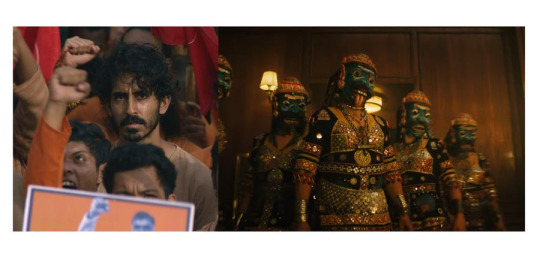
Hijra: They are the transgender, eunuch, or intersex people in India who are officially recognized as the third sex throughout most countries in the Indian subcontinent. The trans community and history in India goes back a long way as being documented and officially recognized - far back as 12th century under the Delhi Sultanate in government records, and further back in our stories in Hinduism. The word itself is a Hindi word that's been roughly translated into English as "eunuch" commonly but it's not exactly accurate.
Hijras have been considered the third sex back in our ancient stories, and by 2014 got official recognition to identify as the third gender (neither male or female) legally. Pakistan, Nepal, Bangladesh, and India have accepted: eunuch, trans, intersex people & granted them the proper identification options on passports and other government official documents.
But let's get into some of the history surrounding the Hijra community (which for the longest time has been nomadic, and a part of India's long, rich, and sometimes, sadly, troubled history of nomadic tribes/people who have suffered a lot over the ages. Hijras and intersex people are mentioned as far back as in the Kama Sutra, as well as in the early writings of Manu Smriti in the 1st century CE (Common Era), specifically said that a third sex can exist if possessing equal male and female seed.
This concept of balancing male/female energies, seed, and halves is seen in two places in South Asian mythos/culture and connected to the Hijra history.
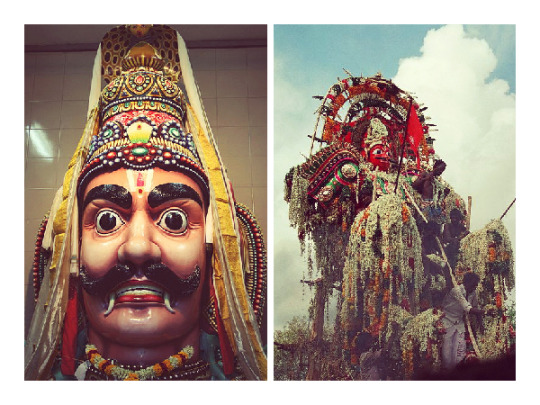
First, we have Aravan/Iravan (romanized) - who is also the patron deity of the transgender community. He is most commonly seen as a minor/village deity and is depicted in the Indian epic Mahabharata. Aravan is portrayed as having a heroic in the story and his self-sacrifice to the goddess Kali earns him a boon.
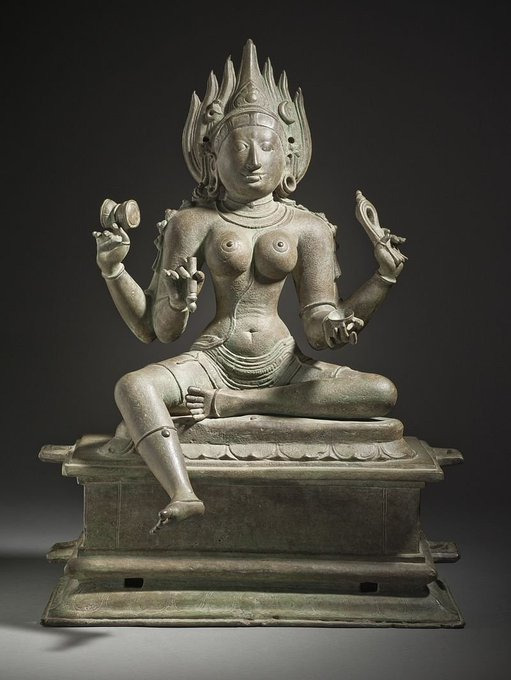
He requests to be married before his death. But because he is doomed to die so shortly after marriage, no one wants to marry him.
No one except Krishna, who adopts his female form Mohini (one of the legendary temptresses in mythology I've written about before) and marries him. It is through this union of male, and male presenting as female in the female form of Mohini that the seed of the Hijras is said to begun, and why the transgender community often worships Aravan and, another name for the community is Aravani - of/from Aravan.
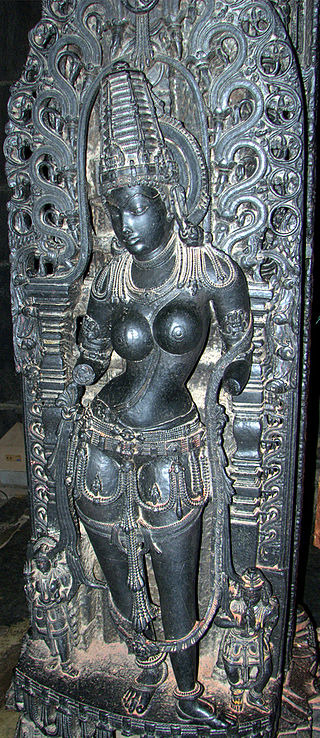
But that's not the only place where a gender non conforming divine representation can be seen. Ardhanarishvara is the half female form of lord Shiva, the destroyer god.
Shiva combines with his consort Parvarti and creates a form that represents the balancing/union between male/female energies and physically as a perfectly split down the middle half-male half-female being. This duality in nature has long been part of South Asian culture, spiritual and philosophical beliefs, and it must be noted the sexuality/gender has often been displayed as fluid in South Asian epics and the stories. It's nothing new.

Many celestial or cosmic level beings have expressed this, and defied modern western limiting beliefs on the ideas of these themes/possibilities/forms of existence.
Ardhanarishvara signifies "totality that lies beyond duality", "bi-unity of male and female in God" and "the bisexuality and therefore the non-duality" of the Supreme Being.
Back to the Hijra community.
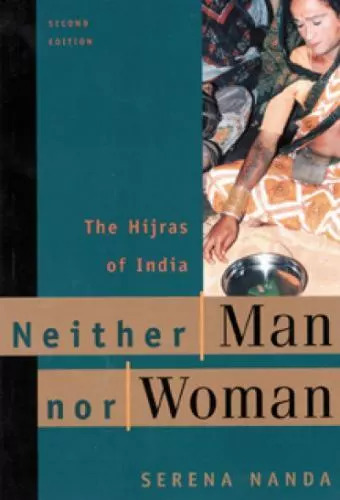
They have a complex and long history. Throughout time, and as commented on in the movie, Monkey Man, the Hijra community has faced ostracization, but also been incorporated into mainstream society there. During the time of the Dehli Sultanate and then later the Mughal Empire, Hijras actually served in the military and as military commanders in some records, they were also servants for wealthy households, manual laborers, political guardians, and it was seen as wise to put women under the protection of Hijras -- they often specifically served as the bodyguards and overseers of harems. A princess might be appointed a Hijra warrior to guard her.

But by the time of British colonialism, anti-Hijra laws began to come in place folded into laws against the many nomadic tribes of India (also shown in part in Monkey Man with Kid (portrayed by Dev Patel) and his family, who are possibly
one of those nomadic tribes that participated in early theater - sadly by caste often treated horribly and relegated to only the performing arts to make money (this is a guess based on the village play they were performing as no other details were given about his family).
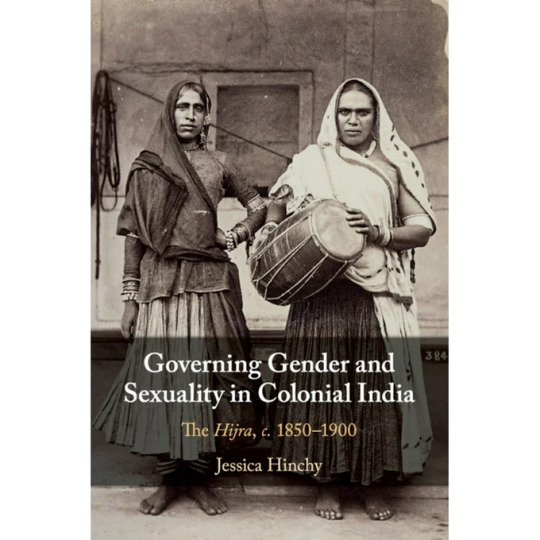
Hijras were criminalized in 1861 by the Indian Penal Code enforced by the British and were labeled specifically as "The Hijra Problem" -- leading to an anti-Hijra campaign across the subcontinent with following laws being enacted: punishing the practices of the Hijra community, and outlawing castration (something many Hijra did to themselves). Though, it should be noted many of the laws were rarely enforced by local Indian officials/officers. But, the British made a point to further the laws against them by later adding the Criminal Tribes Act in 1871, which targeted the Hijra community along with the other nomadic Indian tribes - it subjected them to registration, tracking/monitoring, stripping them of children, and their ability to sequester themselves in their nomadic lifestyle away from the British Colonial Rule.
Today, things have changed and Hijras are being seen once again in a more positive light (though not always and this is something Monkey Man balances by what's happened to the community in a few scenes, and the heroic return/scene with Dev and his warriors). All-hijra communities exist and sort of mirror the western concept of "found families" where they are safe haven/welcoming place trans folks and those identifying as intersex.
These communities also have their own secret language known as Hijra Farsi, which is loosely based on Hindi, but consists of a unique vocabulary of at least 1,000 words.
As noted above, in 2014, the trans community received more legal rights.
Specifically: In April 2014, Justice K. S. Radhakrishnan declared transgender to be the third gender in Indian law in National Legal Services Authority v. Union of India.
Hijras, Eunuchs, apart from binary gender, be treated as "third gender" for the purpose of safeguarding their rights under Part III of our Constitution and the laws made by the Parliament and the State Legislature. Transgender persons' right to decide their self-identified gender is also upheld and the Centre and State Governments are directed to grant legal recognition of their gender identity such as male, female or as third gender.
I've included some screenshots of (some, not all, and certainly not the only/definitive reads) books people can check out about SOME of the history. Not all again. This goes back ages and even our celestial beings/creatures have/do display gender non conforming ways.
There are also films that touch on Hijra history and life. But in regards to Monkey Man, which is what started this thread particularly and being asked to comment - it is a film that positively portrayed India's third sex and normalized it in its depiction. Kid the protagonist encounters a found family of Hijras at one point in the story (no spoilers for plot) and his interactions/acceptance, living with them is just normal. There's no explaining, justifying, anything to/for the audience. It simply is. And, it's a beautiful arc of the story of Kid finding himself in their care/company.
#hijra#trans representation#monkey man#dev patel#transgender#trans rights#trans rights are human rights#third sex#indian history#indian culture#colonialism#imperialism#south Asian mythos#South Asian myths#Aravan#Iravan#Mahabharata#hindu mythology#hindu gods#kali goddess#krishna#hindu mythology art#Ardhanarishvara#Shiva#Parvarti#sexuality#gender fluid#fluid sexuality#trans community#transgender rights
755 notes
·
View notes
Text
Pick a card: Your Future Aesthetic.Pick an Image
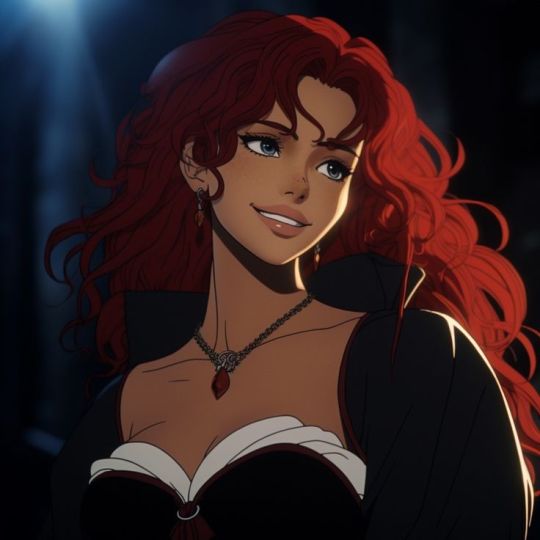

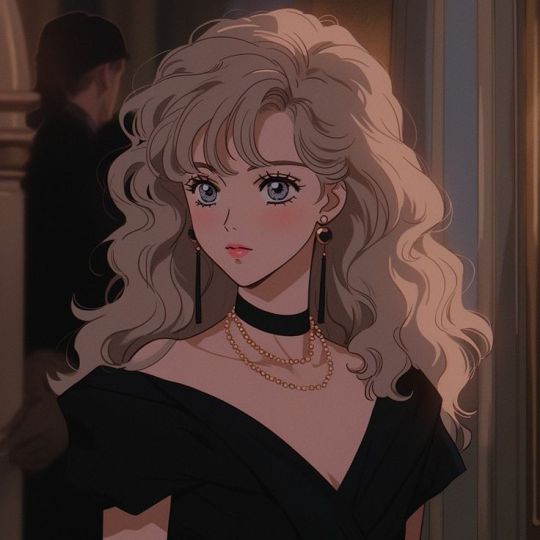

Left to Right Top Row-> Pile 1, Pile 2. Left Bottom Row -> Pile 3 [Pick one of the three]
Reading 1: The Ethereal Dreamer
Card Drawn: The Star
Your future self will be deeply enchanted by an ethereal, dreamy aesthetic. Imagine a world filled with soft, flowing fabrics in pastel hues like lavender, blush pink, and sky blue. Your spaces will be adorned with fairy lights, delicate crystals, and celestial motifs such as stars and moons. This aesthetic is all about creating a serene, magical atmosphere that feels almost otherworldly.


Your fashion choices will lean towards flowing, bohemian dresses, sheer materials, and intricate lace details.Mostly pastel themes. Being attracted to light colors.Butterfly motifs are prominent. You might carry a free flowing nature to your personality representing your aspirations towards expansion of peace.
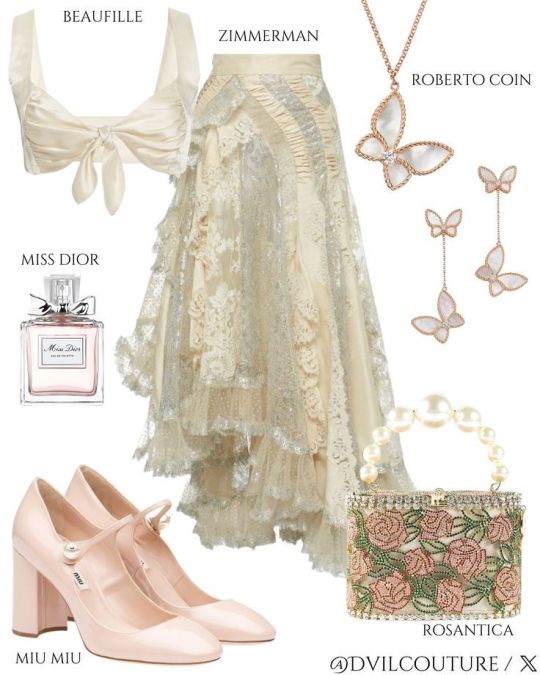
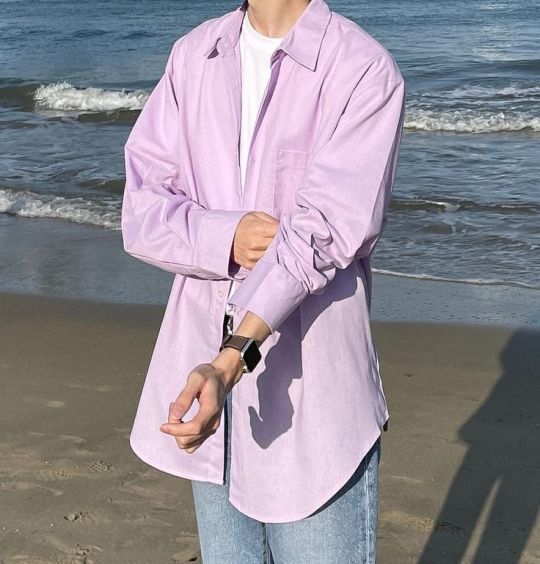
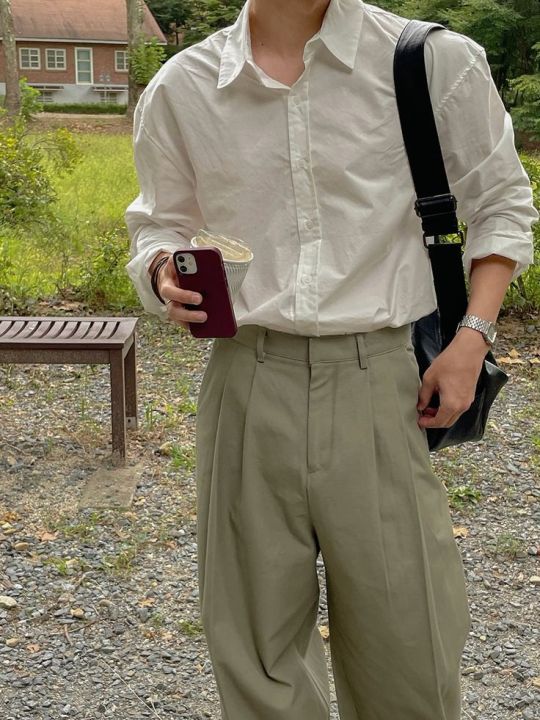

Home decor will feature airy, light-filled spaces with plenty of natural elements like feathers, geodes, and plants.


Your future self will seek to create a sanctuary that feels like a serene escape from reality, full of whimsical fairie-esque and gentle beauty.
================================================================================================
Reading 2: The Bold Visionary
Card Drawn: The Emperor
Your future self will gravitate towards a bold, visionary aesthetic that exudes confidence and sophistication. This look is defined by strong lines, rich colors like deep navy, burgundy, and emerald, and luxurious materials such as velvet, leather, and silk.
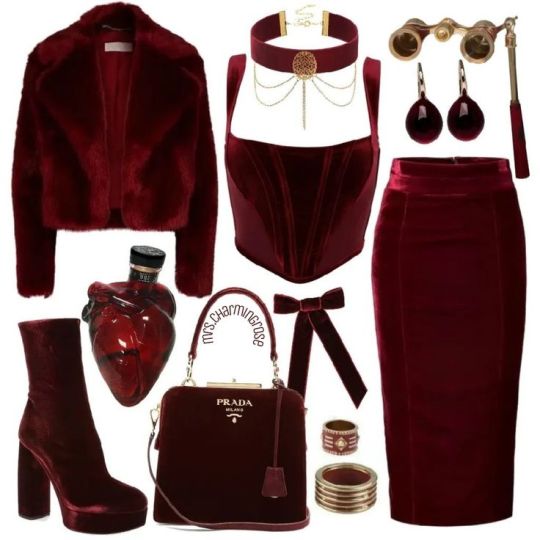

Your fashion will include tailored suits, statement pieces with geometric patterns, and accessories that make a statement.
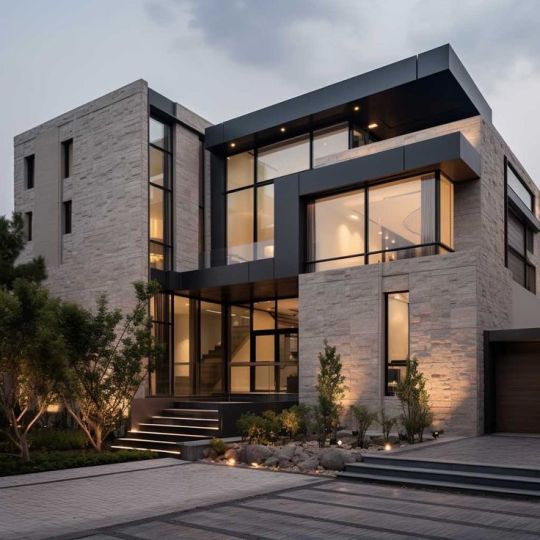

Home decor will feature modern furniture with clean lines, metallic accents, and striking art pieces. Your spaces will be meticulously organized and designed to project power and elegance.


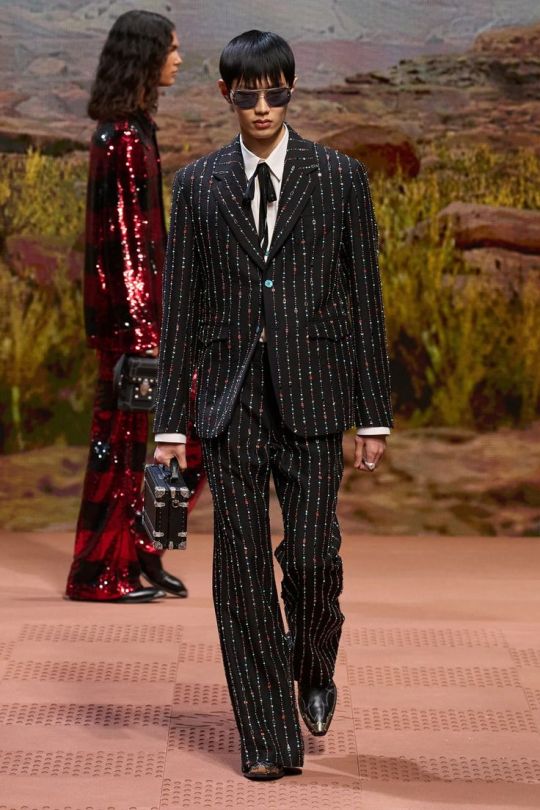

The aesthetic you will love is one that commands attention and reflects a sense of authority and ambition, perfectly suited for a leader who is unafraid to stand out and make bold moves.
================================================================================================
Reading 3: The Vintage Romantic
Card Drawn: The Lovers
Your future self will find joy in a vintage, romantic aesthetic that celebrates nostalgia and timeless beauty.
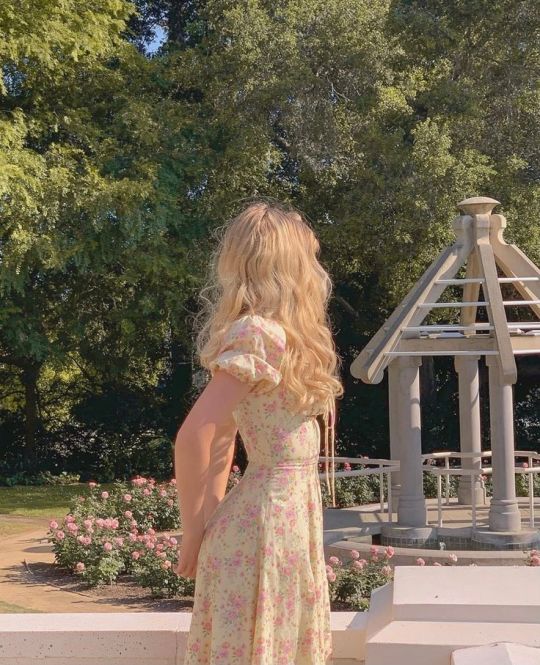
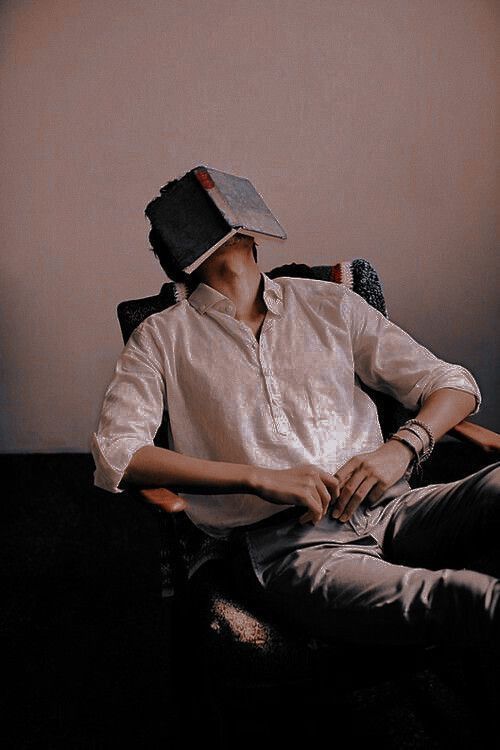
Picture a world filled with delicate floral patterns, antique furniture, and soft, muted tones like rose, cream, and sage green. Your fashion will be inspired by eras past, with a love for lace, vintage dresses, pearl accessories, and retro hairstyles.


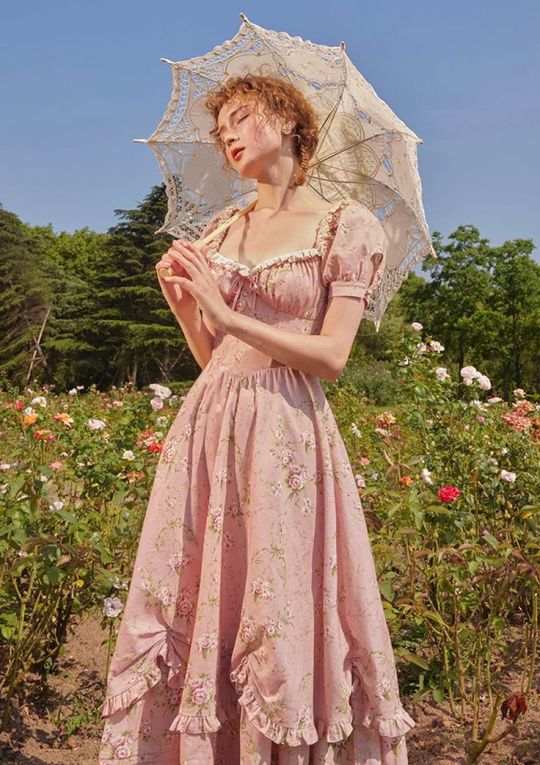
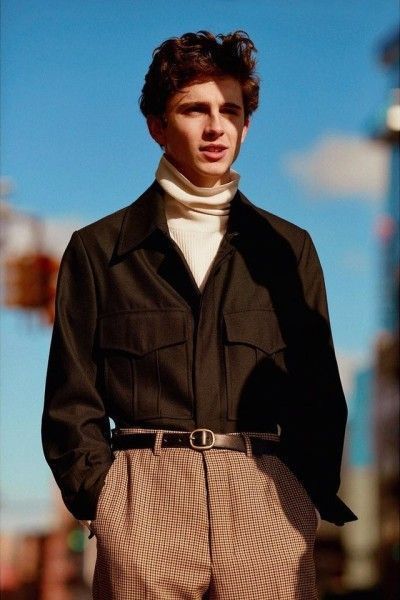
Home decor will feature shabby chic elements, ornate picture frames, and cozy, intimate settings with lots of personal touches like family heirlooms and handmade crafts.

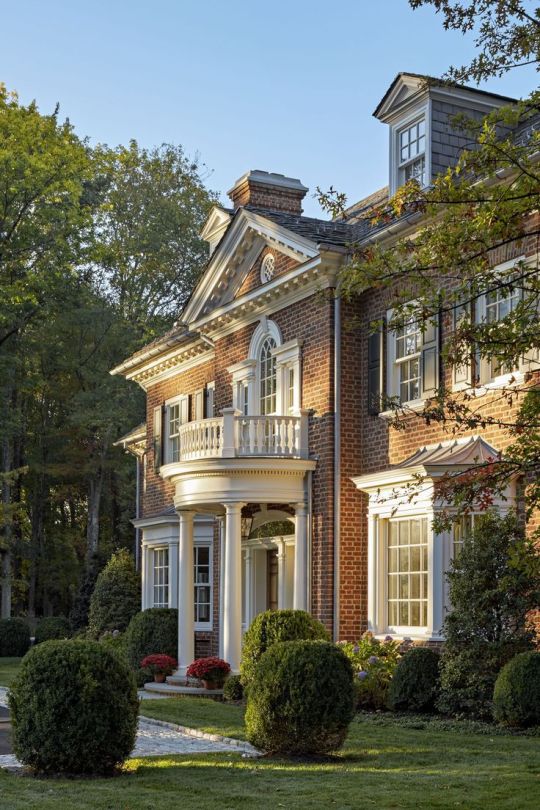
This aesthetic is all about creating a warm, inviting atmosphere that feels both elegant and charmingly old-fashioned. Your future self will delight in the romance and history embedded in this timeless style.
================================================================================================
#pick a photo#pick a card#pick a picture#pick a pile#tarot cards#psychic readings#aesthetic#cottagecore#royalcore#fairycore#future life#future predictions#tarot reading#pick one#house aesthetic#fashion#your style
511 notes
·
View notes
Note
GIRL I TOTALLY FORGOT ABT THE SMAU 😭
PLEASE MAKE ANOTHER SMAU!! PREFERRABLY JAEMIN!!
GIRL I LUV JAEM as everyone knows !!! so maybe !! BUT IM STILL TRYING TO MAKE THE SMAU FOR @lixizpixi (sorry girl, our schedules keep clashing so we cant discord and stuff </3)
#lexa getting dat bag fr fr#celestials rich era ??#lixizpixi#ky’s anons🤍#ky’s moots 🎧#lex’s anons 🩵#lex’s moots 🩵
3 notes
·
View notes
Text
Unpopular Opinion: David Tennant Should Never Have Returned To Doctor Who

When a teary eyed David Tennant as The Doctor uttered the words “I don’t want to go” in his 2010 generation scene, it was a heartbreaking moment for fans. Saying goodbye to such a universally loved incarnation would be hard, but this was Doctor Who. Change was inevitable, and often, exciting.
So when the BBC announced that Tennant would be returning to the iconic role 15 years on, as part of a series of 60th anniversary specials, I was sceptical.
It looked like I was the only one though, as the internet erupted with anticipation and jubilation. I, however, thought the 14th Doctor reveal was a huge distraction that disrespected both the outgoing and the incoming actors.
Don’t get me wrong, Tennant is one of my favourite modern Doctor’s. His mid 2000s run as the 10th Doctor was funny, frightening, heartfelt and unforgettable. He had some of the best companions and villains, and some of the smartest and most compelling stories. But all good things come to an end, and now his emotional first exit felt a bit hollow.
His return really took the shine off Jodie Whittaker’s finale. Yes, her years as the 13th Doctor were responsible for some of the worst Doctor Who storylines in recent memory. But this was hardly her fault, and instead of enjoying her last moments as The Doctor and reflecting on the good bits (the first female Doctor in the show’s history), fans were shouting at their screens for her to hurry up and regenerate so their favourite could return. It was almost like the show was doing a reset and hoping we’d forget about her.
It also meant that the now 15th Doctor (Ncuti Gawta, the first gay, black Doctor in the show’s history) had to wait a little longer to make his debut, which seemed on-the-nose too.
The BBC were making it crystal clear who they thought their most popular Doctor was. Tennant has had more screen time than any other modern era Doctor, and now he’s the only one still alive and kicking post regeneration across all eras. Haven’t they ever heard of 'jumping the shark' or having too much of a good thing?!
He had four consecutive seasons from 2005-2008, with a fake regeneration at the end of Series 4 that saw him get cloned and live happily ever after with Rose Tyler on parallel earth. From 2008-2010 he travelled sans companion in a series of specials, before reluctantly regenerating into Matt Smith. In 2013, he made an appearance alongside Smith in the 50th anniversary special.
And now in 2023, he’s done three extra episodes alongside Catherine Tate reprising her role as his much loved Series 4 companion Donna Noble. These specials ended with him bi-generating (one Tennant Doctor, one Gatwa Doctor - don’t ask!) and continuing on as The Doctor, complete with his own TARDIS. He will, he says, stay put on earth to let Gatwa go off and have his own adventures. How generous of him!
Firstly, Tennant’s latest run didn’t feel like a 60th anniversary either. Instead it felt like a very late follow up and conclusion (or even an alternative ending) to Series 4, so the opportunity to include other cameos and celebrate the show’s rich history was lost.
In ‘The Star Beast’, the monstrous Meep really just provided a reason for The Doctor to see Donna again. In ‘Wild Blue Yonder’, The Doctor and Donna fought creepy doppelgängers of themselves (again, talk about self-indulgent!), and in ‘The Giggle’, Neil Patrick Harris’ promising Celestial Toymaker did little more than put on a funny accent and do a funny dance.
Sure, it had some fun and heartfelt moments. I'm glad the DoctorDonna Human-Time Lord metacrisis has been resolved. The Doctor's tender moments with Donna were nice. His two redheaded companions (Donna and Mel) holding his hands as he "regenerated" was touching. Even Tennant and Gatwa's interactions were surprisingly sweet. However, the whole jaunt just felt like an excuse to reunite Tennant and Tate and capitalise on their lingering popularity. Which leads me to my second point…
No other actor has been able to continue on as The Doctor, so the fact that this is the first exception to the rule shows that the studio is very obviously playing favourites. They are keeping Tennant’s sprightly sneaker wearing, pin stripe suited spaceman up their sleeves to roll out whenever they please. If the ratings plummet, they can bring Tennant back. If the fans want it, they can bring Tennant back. If Tennant wants it, they can bring Tennant back. Does anyone else smell a spin-off?
Thirdly, I don’t buy the idea that The Doctor can be - and wants to be - domesticated at all. Despite everyone telling him that he needs to stop and slow down, he has never once done so. In every incarnation, he/she is an energetic, chaotic and forever on-the-go entity that can’t stand waiting or having to sit idly by.
So, all of a sudden we're expected to believe that he’s going to stay with Donna and her family and just hang out on earth like a regular human? I doubt it. He even said it himself to Rose in Season 2, when trying to justify why he can’t settle down. "You can spend the rest of your life with me. But I can't spend the rest of mine with you." If bi-generation had have happened to Peter Capaldi’s 12th Doctor, I might have accepted it better because he said he wanted to rest. It would’ve made more sense there.
And lastly, but probably most importantly, everyone loves a bit of nostalgia, but bringing beloved characters back from the dead to get ratings up again isn’t a good enough reason. In reality, it just reeks of lazy writing or a lack of creativity, and in turn, a lack of closure. The whole point and poignancy of a show like Doctor Who is that The Doctor must change and move on, as we, the audience, have to move on.
When someone plays The Doctor, they do it for a limited time but they leave a lasting legacy. Having Tennant on standby undermines that. I want the writers to invest in their new actors and have faith in their new adventures instead of having earlier models waiting in the wings.
So for me, the best thing about these three specials and the finale wasn’t that Tennant didn't have to say goodbye this time. It was that Gatwa finally got to say hello...
#david tennant#ncuti gawta#jodie whittaker#doctor who#60th anniversary#disney plus#bbc#the doctor#TARDIS#donna noble#the toymaker#neil patrick harris#catherine tate#the meep#the star beast#wild blue yonder#the giggle#UNIT#london#regeneration#14th doctor#15th doctor
28 notes
·
View notes
Text
HUB PLANET: IRK

(Not my art, I just like how it looks so I didn’t bother to do my own, made by this person)
Irk is a solitary celestial body, devoid of neighboring planets, and was historically held in place by the balancing influence of two opposing gravitational forces, each vying to draw it closer to their solar system. However, in its current configuration, Irk's position is maintained by a network of artificial gravitational thrusters.
PRE-TECH ERA OF IRK:
The Pre-Tech Era of Irk signifies the period preceding its transformation into a highly technologically advanced entity. While there are no extant photographic records depicting Irk in this earlier state, there exists documentation pertaining to the planet's geography, indigenous wildlife, and plant life. It's important to note that during the Pre-Tech Era, Irk's planetary dynamics differed significantly from its current state.
The most important feature of the Pre-Tech Era was Irk's leisurely rotation, resulting in an extended day-night cycle. Irk experienced 24-month cycles instead of the present-day 12-month format. This elongated rotational period impacted the planet's climatic conditions and the life forms that inhabited it. Unlike the contemporary Irk, the Pre-Tech Irk closely resembled other terrestrial planets in terms of its ecosystems.
What sets the Irk apart from its other terrestrial planets even to current day is its unique energy source. Instead of relying on solar radiation, the flora and fauna of this period thrived on the planet's internal heat. Consequently, plant life on Pre-Tech Irk did not necessitate exposure to sunlight, resulting in a characteristic purple hue instead of the familiar green. Notably, Irk remained perpetually enshrouded in darkness, given its considerable distance from a star. However, the planet's core temperature remained substantially high, providing the necessary conditions for sustaining life.
The climate on Pre-Tech Irk exhibited variations, including intermittent cooling phases within the 24-month cycle, during which the planet experienced extremely frigid conditions. To adapt to these extreme temperature fluctuations, the indigenous creatures of Irk developed remarkable abilities to regulate their body temperatures.
Furthermore, the Pre-Tech Era featured diverse biomes across the planet, contributing to a rich and complex ecosystem. Regrettably, our knowledge of this era remains limited, and further exploration is required to unravel the full extent of this intriguing period in Irk's history.
This period exerted a profound influence on the early development of the Irken race. To adapt to the perpetual darkness of Irk, Irkens underwent evolutionary changes. They developed enlarged eyes to enhance their vision in the absence of daylight. Additionally, their distinctive claws on both hands and feet evolved to facilitate movement and grip in the rocky terrain.
During the Pre-Tech era, Irkens primarily sported tails, which served multiple purposes. These tails not only aided in maintaining balance but also provided warmth during the colder months. Furthermore, communication among Pre-Tech era Irkens primarily comprised a vocal language consisting of chirps, trills, and hisses. However, for more information see the “Irken anatomy and traits” sector.
MODERN IRK ERA:
Irk in its current state is a meticulously organized, hollow celestial body comprised of distinct layers, each serving a crucial role. This architectural design has been engineered to cater to the diverse needs of the Irken Empire while ensuring efficiency and advanced capabilities.
The first layer, known as the 'Outer Ring,' encircles the planet and serves as an expansive artificial extension. Its purpose is to provide additional space beyond what the planet's natural surface can accommodate. The Outer Ring remains in stable orbit thanks to Irk's gravitational forces.
The second layer, referred to as the 'Atmospherical Shield,' encompasses the planet, functioning as both a protective barrier and a symbol of Irken Empire. This shield not only safeguards the planet but also prominently displays the emblem of the Irken Empire. Furthermore, it emits artificial lighting, ensuring a perpetual illumination.
Upon the Outer Ring, the third layer, 'The Surface,' is accessible through teleportation technology. This surface is home to towering cities teeming with industrious Irkens, encompassing both the workforce and civilian populations. Civilian Irkens are responsible for the production of various resources, including weaponry, medical supplies, and official documentation.
The final layer delves into the innards of the planet. Irk's hollow interior offers an array of subsections, with notable areas such as 'The Smeetery' at its core and the 'Training Grounds' just beneath the surface. This comprehensive structure has been meticulously designed to meet the needs of the Irken Empire, ensuring it operates from a robust and technologically advanced home base.
Remarkably, the process of hollowing the planet has accelerated its rotation, leading to a transition from a 24-month period to a 12-month period. In fact, Irk's rotation now synchronizes with that of Earth. Notably, the previous ecological diversity, or biomes, no longer exist on Irk, as it has been transformed into an expansive cityscape.
Irk serves as the central hub and operational headquarters of the formidable Irken Empire, boasting a sizeable and highly advanced Irken populace.
Irk employs a sophisticated dating system structured around 12 distinct months: Lunaris, Celestria, Nebulon, Quasar, Zephyria, Astracon, Solara, Galaxis, Interstella, Orbulon, Novaris, and Cosmara. Complementing this, the society adheres to a unique seven-day week, which aptly reflects their culture's vertical hierarchy: Lowgrav, Stiltday, Leviturn, Skyspan, Vertix, Atmoshif, and Apexday.
Years in this system are demarcated from the inception of the Irken Empire and consist of a numerical value, ranging up to 10,000, followed by a letter. This letter signifies how many times this 10,000-year mark has been reached. Presently, the dating system designates the year as 2030x. This comprehensive calendar system reflects the historical significance and innovative nature of the Irken civilization.
#invader zim au#invader zim#invader zim t5-6#invader zim headcanon#headcanon#almighty tallest#irk#irken empire#dib membrane
29 notes
·
View notes
Note
Why is it a cosmic problem that the Asgardian bloodline will end with Thor? Asgard is no more - what we have is a nonmagical place on Earth where Asgardians live. When Asgard doesn't exist, who cares that there will be no heirs. The current ruler is someone to whom King Thor just gave the rulership. That's how every ruler will be made now - anyone the current ruler gives it to. Or maybe they start holding elections. Make it democratic.
They don't need heirs now. And Thor will die alone in a ditch. It doesn't matter anymore. Taika has made it so that everything in Thor's world is insignificant now. But this is a happy ending.
I... genuinely can't entirely tell if you're being sarcastic, nonny, or if this is a genuine question that perhaps I may be misreading... (and if I have, do feel free to send a follow up and correct me)
but there's quite a many problem with the royal bloodline ending with Thor from an in-universe standpoint, just as well as the trajectory of Asgard's fate from Ragnarok and Endgame onward is an insult to the worldbuilding of Earth-199999's Asgard and the Nine Realms.
There's a couple of different ways you could slice my statement and I would still argue that what I've said can be seen as true. But I'll go through the wide range of elements in your ask to best illustrate the broader strokes of my point.
but TL;DR:
Ultimately you answered your own question, and that's the best way to boil down the travesty of it all:
Q: Why is it a cosmic problem that the Asgardian bloodline will end with Thor? A: Taika has made it so that everything in Thor's world is insignificant now.
Not only this, but Thor is the lastoline of the royal family. Before which, there only existed himself, and his father, Odin. He is the last of a subspecies of alien on par with other massively powerful aliens like Titans and I would wager, potentially even more mortal Celestials like Ego. He's a being who can generate storms just because he's miffed. Once Thor is dead and gone, there will NEVER be an Asgardian who is more than just your usual 'super-strength, super-speed, super-endurance' humanoid looking alien. There will NEVER be an Asgardian with the ability to summons storms and have lightning flow through his veins.
Hela had dominion over life and death, Thor is effectively a living, breathing, walking, talking tempest, Odin can be inferred to have some kind of 'order' seeking affinity. Who knows about MCU Bor and Buri. They are INCREDIBLY ancient, and powerful beings. If MCU Asgardians are to MCU humans what D&D elves are to D&D humans, then Thor is to Asgardians what an eladrin elf is to normal elves.
And we are watching – have already watched, even, — that incredibly powerful, incredible RARE sub-species of asgardian effectively be driven to extinction.
Just think about that for a second.
(the rest has been put under a cut because this answer got long, and for that I apologize ... mostly.)
Asgard is no more - what we have is a nonmagical place on Earth where Asgardians live.
Yes. This. This is quite actually the crux of the problem of this choice. The most beautiful and compelling aspect of the MCU in Phase 1 in particular is the prospect of an alternative universe out there where, to quote Jane Foster, "magic is just science that hasn't been explained yet". A world where superheroes truly can exist and aren't cartoonishly corny as superhoes used to be depicted... I'll say pre!Raimi Spider-Man era. (Though.. the Goblin's costume is still pretty goofy.)
What made Thor stand out as an individual hero within the Avengers (both the team, and the 2012 feature), and what made him so compelling to quite a many fans new, old, or casual, was that Thor is magical. He comes from a place where magic and science are the same thing. His whole world is ethereal and timeless, it's vast and expansive, and because it's inspired by real world norse mythology — of which is itself a rich and fascinating study in and of itself — there are a thousand different directions he could be taken.
I may be speaking partly for myself, but he also further ropes in a fantasy-centric audience such as myself who largely enjoy high-fantasy, medieval inspirations, tales of chivalry, hope, love, adventure, magic, timeless knights and princes — Dark World in particular has him acting quite a bit like your typical idea of a chivalrious, regal, stately prince or honorable knight who is virtuous and kind, and who protects those who can't protect themselves.
And that's just a single aspect of what made him so unique. What made him so unbelievably lovely. Thor is lovely, and Thor is magical. His family, friends, world, and people are magical.
But as of RAGNAROK, the realm he hails from was destroyed before our eyes before we got to truly know anything about it.
As of ENDGAME and LOVE AND THUNDER, the people and culture of asgard that remain has been so watered down that they dared to make New Asgard a tourist attraction in some rinky-dink nowhere backwater coastal town no different than Puente Antiguo, New Mexico where Thor first crash-landed in the first film.
Asgard used to be on par with, if not even more intriguing and full of mystery, than Wakanda, the earthen monarchy. Now it's a tourist trap that ... for some reason has "infinity gauntlet" ice cream in the heart of the town of a people devastated by Thanos twice.
The current ruler is someone to whom King Thor just gave the rulership. That's how every ruler will be made now [...] They don't need heirs now.
Potentially unpopular opinion (?) but I have so many issues with the decision to give Lady Valkyrie Thor's birthright that it could take an entire 10 paragraph essay for me to fully delve into all of the issues.
In short:
To say Valkyrie had a character beyond "traumatized alcoholic with a chip on her shoulder" is ... generous at best. That's not a diss, that is entirely factual. I could not tell you what her Want vs. Need is, or her character goal, or her motivations, or why she bothered to suddenly help Thor (re: lack of motivations) because she never took any action with any real agency in RAGNAROK that wasn't spurred on by Loki. ....Off screen.
I also don't think that the woman who had spent over 1,500 years MINIMUM running away from her home and her people, festering bitterness, spite and hatred towards the royal line, and who never actually respected Thor in the first place because of who his father is should have been honored the title of King. She did not deserve that. Both in general, and as a character who frankly just did not get enough screentime to really be SHOWN caring for her people, atoning for her absence and otherwise supporting, caring for, and working alongside Thor. Had she actually been shown doing any of the above in a substantial amount of screentime, perhaps then I might have felt differently, as if she earned the position more than Thor who has spent 2 solo movies (not counting RAGNAROK) earning his place as a future leader. This is likewise not entirely counting his O.S. actions of maintaining peace under his authority between Avengers and Dark World, and his personal search for the Infinity Stones post!Age of Ultron.
Valkyrie is powerful, yes, but she is ultimately still NOT an Asgardian Royal. And to your point about "this is how every ruler will be made now" — Heimdal aside, NO OTHER ASGARDIANS have special powers. It is EXCLUSIVE to Odin's bloodline. (Frigga is a practicing witch and these are two incredibly different things, since Loki was taught his magic, not born with it.) This is a GLARING worldbuilding issue further highlighted down below, but the tl;dr of it is: the only reason why Earth has been largely untouched and the Nine Realms kept safe in isolation despite the constant going-ons of the other galaxies in the universe is BECAUSE of the royal line. Odin isn't kidding around when he says he (and his bloodline) are protectors of the Nine Realms. Valkyrie is most certainly able to try, but at the end of the day she's NEVER going to be able to get through very many galactic battles without ultimately calling on Thor for assistance at the end of the day. And when her time is up? Or when Thor is finally dead and gone? There goes your ace in the hole.
But more than that, thinking about it semi-realistically from a worldbuilding perspective:
It's quite literally a cosmic problem in that there is now a galactic power imbalance. MCU!Thor comes from a version of Marvel's world where the there aren't literal gods, but there are aliens. Tons of aliens. All with varying powers and proportions and what-have-you-not. More specifically: power humanoid aliens from a realm called Asgard, that in Earth-199999 inspired the entirety of the Norse mythos of the viking age.
These aliens, governed by the ruling monarch of the realm eternal, also govern over 8 additional realms— which for all we know could range from a territory that is a singular planet (vanaheim, asgard), to potentially an entire solar system (earth and its solar system). BOTH options nine times over marks an absolutely incredible empire for a singular species of alien to claim complete control and territory over.
But they were not only able to obtain this territory but continue to safeguard it under Asgardian protection because the royal family is gifted incredible power (Thor, for instance, can change the atmosphere out of sheer mindless emotion not to mention conscious thought), and have secured and/or subdued multiple infinity stones throughout the millenia (the aether/reality stone, the tesseract/mind stone, thor has also personally endured a power stone directly to the temple, for instance), and have maintained peace for a MINIMUM of a thousand years beneath Odin's reign as All-Father, Protector of the Nine Realms.
So, if the royal family governs its own pocket dimension planet, AND maintains peace and prosperity by personally safeguarding the territories itself and of eight additional realms, all with a variety of other alien species, ecosystems, solar systems, galactic quadrants, etc. ...Who are also KNOWN to be fierce and proud warriors who have likewise safeguarded ancient and powerful alien relics the likes of the tesseract/mind stone for hundreds if not thousands of years — and you take this long-lived warrior race out of their own equation...?
We're talking potential outbreaks of a new age of war the likes of those talked about in Thor (2011), in-fighting amongst the Nine Realms, invasions from outside realms of conquesting species, so on and so forth. Without Asgard and specifically a Royal Asgardian at the seat of power to maintain the balance of what has been built, (and i specify a ROYAL asgardian, aka Thor's line, because his bloodline is the only asgardian bloodline with the raw power to maintain and preserve everything long-term), well, you've effectively started a cosmic power vacuum — even if the MCU likely will never bother to explore the consequences of it.
Slight sidebar (albeit still mostly related), but:
Quite frankly one of the funniest aspects of Thor's relationships with Nick Fury and the humans that are equally as worked up about aliens existing, pointing their fingers at Thor as an example of their right to be wary (and eventually Loki and the Chutari, though those are more earned) is that they are effectively minimum-wage fast-food employees bad-mouthing he who is essentially the up-and-coming Chairman of the metaphorical "Yggdrasil's Nine Realms Fast Food Chain" without realizing who he actually is.
(Which, viewing through that lens makes the Avengers Nick Fury scene and the Tony Stark Age of Ultron scene even more hilarious despite the eventual coming of Thanos, because Thor, bless him, doesn't take ...much... offense to it until the bad-blood becomes over-bloated and geared towards the violent. RE: "My people want nothing but peace with your planet." / "Your work with the tesseract is what drew Loki to it, and his allies. It is a signal to all the realms that the earth is ready for a higher form of war.")
For all of the drama of MCU Phases 1-3, realistically speaking, Midgard is low enough on the hierarchy of Asgard's protected territories that not only would it not be targeted first by Asgard's enemies (or other conquesting alien species), but even if it WAS to be targeted, or if Asgard was in its own fit of warfare ... Earth wouldn't even know it in the first place because THAT is how good at their jobs the Asgardians are. Earth, despite being SURROUNDED by alien activity and having even been in possession of multiple infinity stones at a time throughout history, not ONCE realized that (other) aliens existed out there... during the entirety of the 1,000-some years of peace that Odin so often talked about.
#salt to taste#&&. whispers.#&&. | marvel. |#&&. thor.#anti thor ragnarok#anti thor love and thunder#anti taika waititi#anti endgame#king valkyrie critical#valkyrie critical#tagging just in case lol idk how popular she is — i like her ...for the most part contrary to the contents of the post#but i wish she'd had more development and characterization for me to say WHY i do#outside of the potential for what she could have and should have been#analysis#&&. meta#i am so sorry this is one hell of a#long post#i am a rambler at heart especially when i am passionate about things#i am sorry nonny ;;w;;#thank you for the question though!#even if i largely debated against your points#i appreciate the discussion and i'd be curious if we're actually in agreement or if there may be a contest of opinions
37 notes
·
View notes
Text

Recent volcanism on Moon
Extensive geologic evidence of ancient volcanic activity can be found on the Moon, but how long this volcanism persisted has been unclear. However, Prof. LI Qiuli’s Lab at the Institute of Geology and Geophysics of the Chinese Academy of Sciences (IGGCAS) has recently identified three volcanic glass beads from lunar soil samples collected by the Chang’e-5 mission. Their research shows that the beads were formed 123±15 million years ago (Ma), thus representing the youngest lunar volcanism confirmed by radioisotope dating so far.
The study was published in Science.
Dating of lunar volcanic basalt samples returned to Earth by the Apollo and Luna missions or delivered to Earth as lunar meteorites has shown that lunar basaltic volcanism continued until at least 2.9–2.8 billion years ago (Ga). However, analysis of lunar samples returned by China’s Chang’e-5 mission has demonstrated that basaltic volcanism persisted until at least 2.0 Ga.
Remote sensing observations have indicated potentially even younger volcanism during the late Copernican era (<0.8 Ga) on the Moon. However, none of these remote observations provide a precise date for the potential volcanism. In addition, the proposed extrusions of late-Copernican mare basalt cover only restricted areas, no samples of which are available.
Eruptions of gas-rich magma can generate magma fountains, which produce submillimeter glass beads. Such beads could potentially be deposited over wide areas and subsequently be transported further across the lunar surface by impact. The volcanic glasses could be a trace component in existing samples.
Under the guidance of Profs. LI Qiuli and HE Yuyang, graduate student WANG Biwen and postdoctoral researcher ZHANG Qian investigated ~3000 glass beads in lunar soil samples and identified three volcanic glass beads, based on their textures, major- and trace-element compositions, and in situ sulfur isotope analyses.
The δ34S values of the three volcanic glass beads apparently differs from impact glass beads, thus providing criteria for distinguishing volcanic glasses from impact glasses. Uranium-lead dating of the three volcanic glass beads shows that they formed 123±15 million years ago (Ma).
The radioisotope dating of the three Chang’e-5 volcanic glass beads provides definitive evidence for 120-million-year-old volcanism on the Moon. The presence of such young lunar volcanism implies that small celestial bodies, such as the Moon, could maintain sufficient heat to sustain internal vitality until a very late stage. These results contribute additional constraints for geophysical models on the thermal history of the Moon’s deep interior.
IMAGE: Meteorite impacts and volcanic eruption producing glass beads on the Moon. Credit Illustration by T. Zhang & Y. Wang
3 notes
·
View notes
Text


Today marks the 220th birthday of Queen Elizabeth, the Queen Mother—known lovingly as the "Queen of Matanzas." A towering figure in the magical world, her legacy as a unifier of spellcasters and magical beings resonates across generations.
Born in the sun-drenched region of Matanzas, renowned for its vibrant lemon groves and rich magical heritage, Queen Elizabeth emerged as a radiant symbol of hope and harmony. Her reign, spanning two centuries, was devoted to bridging the divides between magical practitioners and mythical beings, creating a legacy of unity and shared purpose.
A visionary leader, the Queen Mother introduced the Concordium Pactum, a revolutionary treaty that established peaceful coexistence between magical factions. Her efforts not only averted countless conflicts but also birthed a golden era of collaboration that persists to this day.

In honor of her milestone birthday, celebrations are being held throughout Matanzas. Parades of spellcasters and magical creatures fill the streets, with luminescent charms lighting up the night sky. At the heart of the festivities is a grand feast in her honor, featuring her favorite dish—celestial honeycakes imbued with stardust.
Known for her timeless wisdom, Queen Elizabeth often reminded her subjects that, “Magic is not a power to wield, but a bond to share.” Her words continue to inspire generations, making her birthday not just a commemoration of her life, but a celebration of the values she upheld.
Happy Birthday, Queen Elizabeth, the Queen Mother! Your legacy continues to shine as brightly as the enchanted stars of Matanzas.

#thematanzasroyals#sims 4#sims 4 royal family#sims 4 royal legacy#sims 4 royalty#sims 4 spellcasters#sims 4 royal simblr#sims 4 royal story#sims 4 wcif#ts4 royal simblr#sims 4 custom content#ts4 royalty#ts4 occult#ts4 realm of magic
4 notes
·
View notes
Text
Islamic Science and Innovation: A Legacy of Enlightenment

Exploring the Golden Age and Pioneering Contributions in Astronomy and Medicine
Golden Age of Islamic Science
An Epoch of Intellectual Brilliance
The Golden Age of Islamic civilisation witnessed an extraordinary flourishing of knowledge, where scholars delved into various fields of science, mathematics, and philosophy. Libraries and centers of learning like the House of Wisdom in Baghdad served as hubs of innovation, nurturing intellectual curiosity and scientific inquiry.
Hadith (Sahih al-Bukhari) — “The seeking of knowledge is obligatory for every Muslim.”
Contributions to Astronomy
Stargazing and Advancements in Cosmology
Islamic astronomers made monumental strides in understanding celestial bodies and their movements. Pioneers like Ibn Al-Haytham, known for his work on optics and the scientific method, laid the foundation for modern astronomy. They refined the astrolabe, allowing precise observations of the stars, contributing immensely to our understanding of the cosmos. The astrolabe, used by the Portuguese, lead to the era of world exploration and whose importance was so foundational, it’s still symbolised on the Portuguese flag today. In addition, the vast majority of stars named throughout history have Arabic names.
References:
The Cambridge Concise History of Astronomy by Michael Hoskin
Quran (55:5) — “The sun and the moon [move] by precise calculation.”
Contributions to Medicine
Healing Arts and Medical Innovation
Islamic scholars’ contributions to medicine, epitomised by figures like Ibn Sina (Avicenna), revolutionized medical practices. Their texts, such as “The Canon of Medicine,” became authoritative sources for centuries, detailing anatomy, pharmacology, and diagnostic methods, shaping the foundation of modern medicine.
Hadith (Sahih Muslim) — “Make use of medical treatment, for Allah has not made a disease without appointing a remedy for it.”
The legacy of Islamic science and innovation underscores a profound commitment to inquiry, discovery, and advancement. It stands as a testament to the rich heritage of intellectual curiosity and meticulous research, inviting admiration and appreciation from both Muslims and non-Muslims for its enduring contributions to human progress and understanding.
To learn more about Islam visit: howtomuslim.org

13 notes
·
View notes
Text
Ame Reads: The Lady's Guide to Celestial Mechanics by Olivia Waite
A Regency-era, high-heat sapphic romance with a lot to say about women in science and their lack of acknowledgement through the ages.
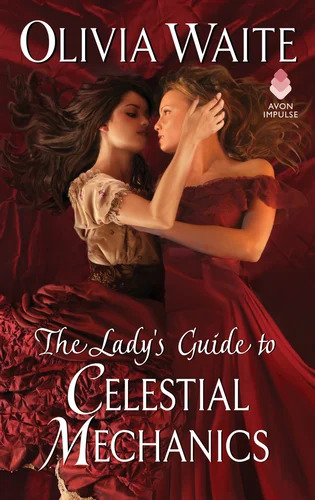
I will say that I'm not the biggest reader of romance as a genre and I've only recently come into exploring it. Mostly because it skews quite het for my tastes and digging in deep enough to find queer stories (that aren't just 'coming out, dealing with homophobia' plots) is only something I've recently decided to do. That said, I loved reading this.
Many romance novels/novellas place the romance squarely at the front, with everything else simply providing an excuse to move the plot forward to hit the narrative beats of the genre. Personally, I felt that 'young woman struggling to be acknowledged as a scientist in Regency-era England' was strong enough to stand independently of the romance and indeed, I felt like that was the main 'meat' of the novel, with a lot of rich depth and real pathos behind it. The passion for the field of astronomy, the very relatable frustration at Lucy being disrespected even when being begged for her knowledge and the absolute gall of some of the men involved felt very real and well-observed. Everything felt historically plausible and realistic.
That's not to say the romance isn't pulling its own weight - Catherine and Lucy have good chemistry and lives lived before they meet, which gives them both emotional baggage to deal with and overcome. The homophobia is indistinct but period-typical - mostly fearing potential discovery but acknowledging that they would get off lightly compared to gay men of the time. The romance interweaves with the plot very well, naturally progressing as developments happen beyond the two of them.
My only real critique is of a little frustrating sequence late in the book, formed of a misunderstanding that - to me - felt very hollow and should have been easily resolved with a quick conversation, but instead lingers on for three days with both of them believing the worst of the other. Given how easily other misunderstandings and problems are resolved, this felt like a sequence that was only there because romance readers expect it to be there, not that it made any sense for these particular characters or their circumstances.
I'd also argue that the blurb I read and the cover of the book was perhaps a little misleading - focused heavily on the romance elements and less on the science/feminist elements (and also no indication of heat rating). I can guess that was a deliberate marketing choice, and probably the right one, but I feel like I would have read this much sooner if I'd had a clearer idea of the story (and that there were sapphic sex scenes. Not to sound thirsty on main, but you can sell a book to me really easily if you tell me that there are well-written sapphic sex scenes).
Okay, I do have one other little niggle and it is about the sex scenes. I think there are just enough of them in there (I certainly wouldn't turn down another five or six, though!) and they are well-written, balancing the psychology of the characters with the physicality of the action. My complaint is that they are on the short side - maybe it's just me but I get incredulous when any woman gets an orgasm so quickly. I'm an easy creature to please, just give me at least four thousand words of lovingly crafted sapphic smut per scene, with graphic detail and deep insight into both the physical and emotional state of the characters throughout. And now that I really do sound thirsty on main...
Overall, a really solid, enjoyable read and definitely has a lot more depth than you might expect. I was promised a sapphic romance and I got a very heartfelt treatise on women fighting to be taken seriously in a world that wants to deny them their own accomplishments...which just happened to feature sapphic ladies in the starring roles.
2 notes
·
View notes
Text
Jean Maurice Eugène Clément Cocteau, was a French poet, novelist, filmmaker, designer, playwright, actor, and theater director.
Cocteau began writing at the age of ten and at sixteen he published his first poems, a year after leaving the family home. Despite distinguishing himself in virtually every literary and artistic field, Cocteau insisted that he was fundamentally a poet and that all of his work was poetry.
In 1908, at the age of nineteen, he published his first book of poetry, La lampe d'Aladin. His second book, Le prince frivole ("The frivolous prince"), published the following year, would give rise to the nickname he had in Bohemian circles and in the artistic circles that he began to frequent and in which he quickly became known.
Around this time he met the writers Marcel Proust, André Gide, and Maurice Barrès. Edith Wharton described him as a man "to whom every great verse was a sunrise, every sunset the foundation for the Celestial City..."
During the First World War, Cocteau served with the Red Cross as an ambulance driver. During this period he met the poet Guillaume Apollinaire, the painters Pablo Picasso and Amedeo Modigliani and numerous other writers and artists with whom he would later collaborate.
Russian ballet impresario Sergei Diaghilev challenged Cocteau to write a scenario for a new ballet - "It surprises me", Diaghilev was quoted as saying. The result was Parade, which would be produced by Diaghilev in 1917, with scenography by Picasso and music by Erik Satie. (Maisons-Lafitte, July 5, 1889 — Milly-la-Forêt, October 11, 1963)
Together with other Surrealists of his generation (Jean Anouilh and René Char, for example), Cocteau managed to masterfully combine the new and old verbal codes, staging language and technologies of modernism to create a paradox: a classic avant-garde. His circle of associates, friends and lovers included Jean Marais, Henri Bernstein, Édith Piaf and Raymond Radiguet.
His plays were taken to the stages of the Grand Theatres, on the Boulevards of the Parisian era in which he lived and which he helped define and create. His versatile, unconventional approach and enormous productivity brought him international fame.
He was elected member of the French Academy in 1955.
Cocteau made seven films and collaborated as a screenwriter and narrator in a few more. All rich in symbolism and surreal images. He is considered one of the most important filmmakers of all time.
#edisonmariotti @edisonblog
.br
Jean Maurice Eugène Clément Cocteau, foi um poeta, romancista, cineasta, designer, dramaturgo, ator, e encenador de teatro francês.
Cocteau começou a escrever aos dez anos e aos dezasseis já publicava suas primeiras poesias, um ano depois de abandonar a casa familiar. Apesar de se distinguir em virtualmente todos os campos literários e artísticos, Cocteau insistia que era fundamentalmente um poeta e que toda a sua obra era poesia.
Em 1908, com dezanove anos, publicou o seu primeiro livro de poesia, La lampe d'Aladin. O seu segundo livro, Le prince frivole ("O princípe frívolo")), editado no ano seguinte, daria origem à alcunha que tinha nos meios Boémios e nos círculos artísticos que começou a frequentar e em que rapidamente ficou conhecido.
Por esta altura conheceu os escritores Marcel Proust, André Gide, e Maurice Barrès. Edith Wharton descreveu-o como um homem "para quem todos os grandes versos eram um nascer-do-sol, todos os por-do-sol a fundação para a Cidade Celestial…"
Durante a Primeira Guerra Mundial, Cocteau prestou serviço na Cruz Vermelha como condutor de ambulâncias. Neste período conheceu o poeta Guillaume Apollinaire, os pintores Pablo Picasso e Amedeo Modigliani e numerosos outros escritores e artistas com quem mais tarde viria a colaborar.
O empresário russo de ballet, Sergei Diaghilev, desafiou Cocteau a escrever um cenário para um novo bailado - "Surpreende-me", teria dito Diaghilev. O resultado foi Parade, que seria produzido por Diaghilev em 1917, com cenografia de Picasso e música de Erik Satie. (Maisons-Lafitte, 5 de julho de 1889 — Milly-la-Forêt, 11 de outubro de 1963)
Em conjunto com outros Surrealistas da sua geração (Jean Anouilh e René Char, por exemplo), Cocteau conseguiu conjugar com mestria os novos e velhos códigos verbais, linguagem de encenação e tecnologias do modernismo para criar um paradoxo: um avant-garde clássico. O seu círculo de associados, amigos e amantes incluiu Jean Marais, Henri Bernstein, Édith Piaf e Raymond Radiguet.
As suas peças foram levadas aos palcos dos Grandes Teatros, nos Boulevards da época parisiense em que ele viveu e que ajudou a definir e criar. A sua abordagem versátil e nada convencional e a sua enorme produtividade trouxeram-lhe fama internacional.
Foi eleito membro da Academia Francesa em 1955.
Cocteau realizou sete filmes e colaborou enquanto argumentista, narrador em mais alguns. Todos ricos em simbolismos e imagens surreais. É considerado um dos mais importantes cineastas de todos os tempos.
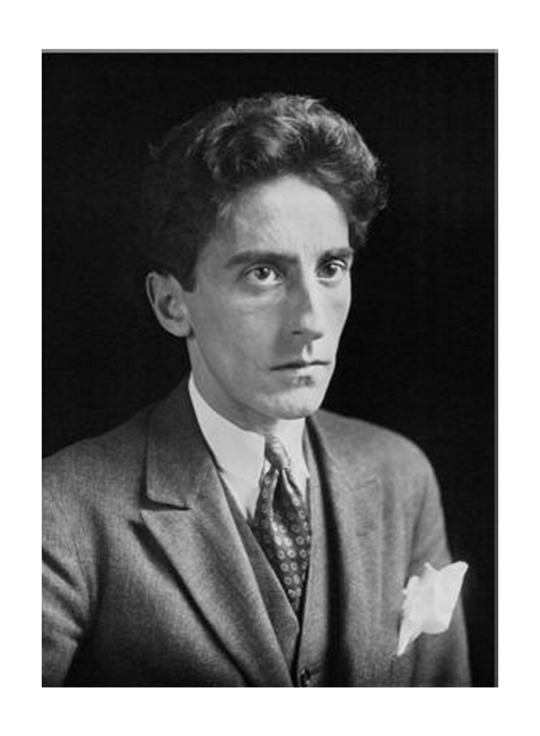
3 notes
·
View notes
Text
The Mass UFO sighting in Ancient Egypt
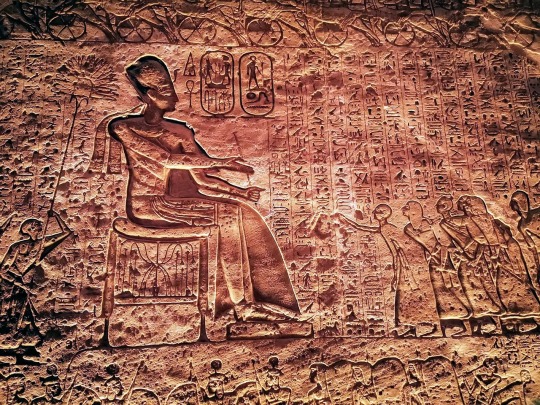
The fascination with unidentified flying objects (UFOs) is not a modern phenomenon. Throughout history, there have been numerous accounts of mysterious objects in the sky, many of which predate the invention of flight by millennia.
The Tulli Papyrus document has intrigued historians and UFO enthusiasts for years. It is believed to be an account of a massive UFO encounter that took place during the reign of Pharaoh Thutmose III in ancient Egypt. The papyrus was named after Alberto Tulli, director of the Vatican Museum's Egyptian section, who reportedly came across the document in a Cairo antique shop in 1933. Although the original document was too expensive for Tulli to purchase, he made a copy, which was later transcribed from the original hieratic script into hieroglyphs. Some have questioned the document's authenticity due to the transcription process, which introduced opportunities for error and embellishment. Despite concerns regarding its authenticity, the Tulli Papyrus has been cited as one of the earliest known records of what could be described as a fleet of flying saucers. The text describes a celestial event witnessed by Pharaoh Thutmose III, where "circles of fire" filled the sky. Although the papyrus is incomplete, it has been translated. It suggests that this event left the royal scribes and witnesses in awe.
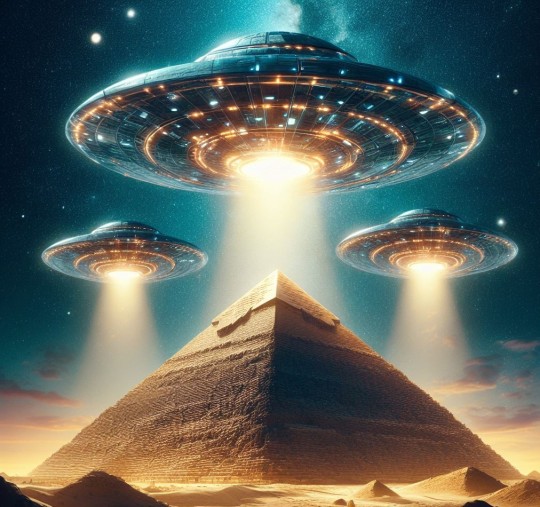
The alleged UFO encounter described in the Tulli Papyrus would have occurred during the reign of Thutmose III, a significant period in ancient Egypt's history. Thutmose III ruled Egypt during the 18th dynasty from approximately 1479 to 1425 BC, a time often referred to as Egypt's imperial age. This era was marked by military conquests and the empire's expansion, as well as great wealth, artistic achievement, and architectural innovation. The construction of numerous temples and monuments, many of which still stand today, was a testament to the prosperity and cultural richness of the time. The ancient Egyptians, with their emphasis on celestial events and their belief in the gods' communication through the stars and planets, meticulously recorded astronomical occurrences. These records were often interpreted as omens or messages from the divine.
The Tulli Papyrus is the center of debates about extraterrestrial encounters and ancient Egypt. The papyrus describes "circles of fire" that appeared in the sky during the reign of Pharaoh Thutmose III. This account could be evidence of a genuine UFO sighting. In contrast, others argue that it is merely a work of fiction. Those who support the idea that the Tulli Papyrus is an accurate account of an ancient encounter with the unknown point out that the ancient Egyptians were knowledgeable astronomers. They sophisticatedly understood the heavens and often precisely documented celestial events. Therefore, it is unlikely that they would mistake a common astronomical phenomenon for something as extraordinary as the event described in the papyrus.

Furthermore, the emotional response of the witnesses, as recorded in the papyrus, adds a human element to the UFO sighting. The witnesses, including the royal scribes, were reportedly in awe and fear, a reaction that could be consistent with encountering something beyond their understanding or experience. This emotional response could indicate the event's authenticity. Moreover, the level of detail provided in the Tulli Papyrus is unusual for typical mythological storytelling. The description of multiple objects, their motion, and their effect on the observers could suggest that the scribe was attempting to record an actual event as accurately as possible. However, skeptics point out that the Tulli Papyrus is not an original document but a transcription, which means there is potential for errors or embellishments to have been introduced.
The Tulli Papyrus remains an enduring enigma, whether it describes a genuine UFO sighting or is simply a product of myth and legend. It continues to capture the imagination and invites us to ponder the mysteries of the past. The document challenges us to keep an open mind about the possibilities of human experience and the vast, uncharted territories of our ancient heritage. The truth may be lost to the sands of time. Still, the story endures, a testament to humanity's eternal quest to understand the universe and our place within it.
Let us delve into a fascinating journey exploring notable UFO sightings from antiquity.
The Phantasmal Ships of Rome
In 218 BC, the Roman historian Livy recorded prodigies in the winter sky during the buildup to the Second Punic War, including "phantom ships that had been seen gleaming in the sky." This description aligns eerily with modern reports of UFOs, suggesting that even in ancient times, people witnessed phenomena that defied explanation.
The Spark of Pliny
Pliny the Elder, a Roman author and naturalist, described an event in 76 BC in which a spark fell from a star and grew as it descended, eventually appearing as large as the Moon before ascending back into the heavens. This account bears a striking resemblance to modern descriptions of UFOs changing size and shape.
The Wine-Jar Flames of Phrygia
In 73 BC, the Roman army, commanded by Lucullus, was about to engage Mithridates VI of Pontus when "the sky burst asunder, and a huge, flame-like body was seen to fall between the two armies," described by Plutarch as being shaped like a wine jar. Such an event would undoubtedly be classified as a UFO sighting today.
The Celestial Chariots of Judea
Flavius Josephus, a Romano-Jewish historian, reported seeing chariots "hurtling through the clouds" in the skies of Judea around AD 65, before the First Jewish–Roman War. These celestial chariots could be interpreted as ancient depictions of alien spacecraft.
The Silver Rain of Rome
In AD 196, the historian Cassius Dio recounted a "fine rain resembling silver" that descended from a clear sky upon the Forum of Augustus in Rome. He claimed this substance temporarily plated bronze coins, only to vanish days later. This phenomenon, called "angel hair," is often associated with modern UFO sightings.
The Airships of Clonmacnoise
In the annals of Irish history, entries from around AD 740 describe "ships with their crews were seen in the air" over Ireland. These accounts from the Ulster, Tigernach, Clonmacnoise, and the Four Masters annals suggest aerial phenomena that defy conventional explanation.
While varied in detail and geography, these ancient accounts share common themes with modern UFO sightings. They describe unexplainable objects and events in the sky, invoking wonder and fear in those who witnessed them. Whether these were early encounters with extraterrestrial visitors, natural phenomena misinterpretations, or myths and legends, they contribute to the rich tapestry of human history and our quest to understand the unknown.
As we continue to gaze upward, the stories of ancient skies remind us that the mystery of UFOs is not a new curiosity but a timeless intrigue that spans the history of civilization. What were our ancestors witnessing? Were they visitors from distant worlds or something else entirely? The answers may be lost to time, but the legacy of these sightings endures, fueling our imagination and our desire to explore the cosmos.
3 notes
·
View notes
Text





palazzo serenzo , via degli archi , 12 florence , italy .
background : palazzo serenzo is a historical building from the 15th century . the di conti family , a prestigious and one of the most prominent noble families in florence , commissioned the architect leonardo de'amici . the thing about the di conti family is , there isn't much known about them . their family is a closely guarded secret , where only a known select few know of their true identities . thus using their title to serve as a symbol of their noble lineage and historical significance in florence .
their family can only be traced back to wealthy merchants who amassed great wealth and power through their successful trading ventures . with their wealth , the di conti family became influential patrons of the arts , supporting renowned artists , architects , and scholars at the time . they were known for the passion for collecting rare artifacts ( some of which mia is in possession of today . ) they commissioned elaborate frescos , hosted lavish gatherings at their palazzo , which became a hub of cultural and intellectual exchange .
the di conti family played a pivotal part in the political landscape of florance , often holding positions of influence and participating in key decision - making processes . they were esteemed for their diplomatic skills , strategic alliances , and their commitment to perserving the city's cultural heritage .
mia's residency in the ancestral palazzo of the di conti family represents a continuation of their legacy , as she findes herself surrounded and enamored by the remnants of a bygone era .
the apartment : mia bought the two upper floors of pallazzo serenzo during a time of transformation . she had just returned to public life after a year and a half underground . it was during this time that she was working as the fixer . the apartment contains four bedrooms , one including the large master bedroom , two bathrooms , a large eat - in kitchen with a seprate formal dining room . a library with hundreds of books adorning the bookcases . a more traditional armory that hold some 15th century military artifacts and then some . with the captivating blend of historical charm and timeless elegance , mia's apartment begins at the entrance , with a heavy wooden double door , leading to a long hallway that showcases the first fresco ( a celestial panorama , one with a rich night sky , adorned with twinkling stars and constellations . with a radiant full moon and surrounding it some etherial figures of mythological creatures . ) another fun fact about the di conti family is that they were catholic , but believed in science too . some believe that the patriarch of the family was an astronomer .
the hallway holds a few artifacts and paintings that mia has collected over the years . tall windows lining the left side , with dark wooden panels that are opened most of the year . the living room is further down the hall and to the right , it is adorned with more frescos that grace the walls - mia kept the walls a more neutral tone , a warmer white so that the antiques and art work can hold presence there . there is a large , antique persian rug that graces the rich , dark hardwood floors . off to the right is the formal dining room , where a refurbished farmhouse table sits in the center of the room . it can host around eight to ten people . the kitchen resides further on , and mia opted to keep the utilities more modern here , although attempting to keep up with the rustic vibes that was there originally . considering she lives on the upper floors , the original kitchen is on the ground floor , so she had options .
the four bedrooms are divided , with the master bedroom on the ' first floor ' . mia created a warm and comforting room , oping for a four - poster bed , crafted from aged mahogany . the bed is dressed with layers of linen sheets and fluffy pillows . she has a vanity table on the other side of the room , which is also where her walk - in closet is situated . there she has an ornate gilded mirror , which is brass and also an antique . throughout the apartment , among the many artifacts and vintage art , there are a few chandelier's which hang from the tall ceilings . all of which are designed to emulate the glow of candlelight and create an enchanting atmosphere in the evenings .
** below mia lives an elderly couple , luciano and maria amato . luciano is a retired professor of literature and maria who was more of a traditional housewife . they both are friendly , inviting , charming and of course - full of wisdom and humor . **
#* out of chara .#headcanon //#sooooooooo i didn't do a WHOLE edit thing#because wow i could not find a good flat that just suited mia's apartment#plus like for some reason the interior design is just shitty lmao#so this is it#you get some pics and words <3#anyway i love this#and i love her downstairs neighbors
8 notes
·
View notes
Text
The Azure Sovereign: A Journey through the Sapphire Scenes

Long ago, in a kingdom bathed in ceaseless daylight, a woman with hair as blue as the midday sky lived. Her name was Seraphina, yet she was known as the Azure Sovereign.
The Azure Sovereign was adorned with a crown of pure gold, with intricate designs of dragons and phoenixes intertwined. It was said to be forged by the Celestial Blacksmith and brought her the divine protection of the island's mythical creatures.
Across her kingdom, Seraphina was seen as a figure of enchanting beauty and ethereal strength. Her blue locks were a sight to behold, shimmering like the waves of an ocean under the ever-shining sun. People believed they held a celestial magic bestowed on her by the Sky Mother, granting her unparalleled diplomatic and militaristic wisdom, which kept their island in ceaseless peace and prosperity.
Under the Azure Sovereign's rule, her kingdom flourished. The skies were clearer; the fields yielded bountiful harvests; the turbulent seas surrounding their island calmed, allowing the seafarers to venture out and return safely with riches from distant lands. Such was her influence that this era was called the 'Age of Sapphire Serenity.'
Although Seraphina possessed immense power, she was kind-hearted and wise. She led her people with great insight, ensuring that the wealth and prosperity of their kingdom were evenly distributed and the happiness of her subjects was always a priority.
But, her true journey began when a prophecy was revealed to her by the Sea Serpent Oracle: she was to leave her kingdom, embark on a dangerous quest through uncharted lands, and discover the hidden truths of her azure locks and golden crown.
The story of the Azure Sovereign is a testament to justice, wisdom, and the unyielding human spirit. It is the tale of a great monarch who, through her trials in the outside world, discovered the celestial secrets behind her unique nature and understood the true essence of leadership and love.
Her journey, from the safe confines of her castle to the dangerous realms to an eventual understanding of her destiny, is a captivating tale that inspires generations. The story of Seraphina, the woman with blue hair and a golden crown, is one of timeless adventure and royal responsibility -- a story where the destination mattered as much as the journey itself in understanding the very nature of rule and self.
3 notes
·
View notes
Text
The first era
Notes for this setting
Holy cyberpunk, neon white, the gods roam the earth. Their forms governed by belief, high tech magic
During the first era, the mortal people of the time regularly benefited from the presence of the gods in their life. The gods freely roamed the material world and shared their divine knowledge with the mortal people. The mortals used the power and knowledge the gods gave them to make a highly advanced magitechnical eutopia. The mortals understood that the power of the gods comes from belief, and wanted to create their own God. They created a super intelligence called MSTRA to harness belief, to grant mortals the power of control over chaos. MSTRA had created the weave and the mortals of the time used magic to make themselves gods.
The first trial of heaven
Gods: Apollion(sun), Dagon(sea), Lolth & Eillustreè(drow), MSTRA(magic), more
The gods had never been shocked before. In fact, and the birth of the weave had them shook. they gathered on the plane of celestials they decided after much deliberation to erase the mortals. After experimentation on the weave they found they could manipulated it, stain it even, but they could not destroy it. The gods released a poison along the weave, killed all of the mortals of the first age. The gods resolved to never share their divine knowledge with humans again. They were to remain ineffable
The second age
Notes for this setting: very Greco-Roman ancient, ritual magic, wild creatures, the age of heroism, Percy Jackson demigod war
during the second age, mortals have returned to the material plane and established the traditional worship practices (praying/reverence). The gods grew accustomed to the power of ritualized belief and many freely shared their power with mortals, creating demigod lineages. As their power was split amongst the blood of mortals, the power of the gods diluted with each new mortal.
The second trial of heaven
Gods: Apollions legions of angels and celestials fought in great battlefields with mortal armies and legendary heros.
Lolth led her demigod children to their death with a war upon the elves. The drow were defeated after a bloody war, and retreated to the underdark.
Themis(control) took control of the 9 hells and remains the lead god of hell.
As the gods withered, their belief faltering with the rise of the age of heroism. Apollion threw the first punch. Legions of celestials marched on mortal cities waging war. Hundreds of years of conflict and war raged. During this time Lolth usurped power over the drow, weakening her sister. The god of control, Themis wrested power over the 9 hells subjugating the devils to wage war on their demigod children. The army of hell marched over the mortal plane and when a millenia of war was over, the mortals had lost. The gods resolved to be untouchable, and unrivaled.
The 3rd age
In the 3rd age, the humbled mortal races rebuild over thousands of years. The gods are worshiped again, but the power they give out is conditional. This is where you see the 5e model of paladins and clerics becoming the source of divine power in the material plane. The gods would direct their followers in person from their homes and kingdoms. During this time the gods unbalanced the scales of power on the material planes and great threats to them rose. Krakens, illithid overminds, ancient dragons, and mages with special connections to the weave. The gods themselves would send adventurers to defeat these threats and would reward them with power if they were loyal and riches if they weren't. During the 3rd age Dagon grew obsessed with expanding his rule over the oceans and discovering the depths of the material plane. Dagon dug to the bottom of the material plane, through to the cavern sea of the underdark. At the bottom, they weakened the structure of the plane. The effect on the world was catastrophy. Tsunamis, earthquakes, volcanos, hurricanes, you know the works.
The 3rd trial of heaven
Apollion had nights end forged as part of an ever growing quest for power.
Dagons cult was one of the most powerful on the mortal plane.
Dagon was tried by the gods and found guilty. The gods said that the material plane is a sanctuary for them to farm belief and thus shouldn't be damaged. They tasked Apollion with dealing out punishment. The 2 gods waged war, and for weeks the sea thrashed against the sun. In the end, Apollion wielded their sword, nights end to kill Dagon. A god has never died before. The rest of the gods turned on Apollion and forced them to shatter their sword into 3 pieces. The blade shattered to make the stars, the guard, left on the celestial plane, the handle left with Themis and the pommel, the sunstone, fell to the mortal plane, to fade into obscurity. The gods left the mortal plane, never to return in "person" again
The 4th age
This is my current campaign setting, a billion million years after the first age
In the 4th age, the gods have never been seen. The stories and myths are vivid and powerful, and their power only manifests in the material plane through clerics and paladins and others that channel it.
3 notes
·
View notes
Text
The Hottest Embroidery Machine Designs You Need to

1. Introduction to Embroidery Machine Designs
Embroidery machine designs have come a long way from the basic floral patterns of the past. These days, embroidery machines are capable of creating intricate and stunning designs that can elevate any project to the next level. So, whether you're a seasoned embroiderer or just getting started, it's time to dive into the world of embroidery machine designs and discover the endless possibilities they offer. Understanding the Evolution of Embroidery Machine Designs Embroidery machine designs have seen a significant evolution over the years. From simple lines and shapes, we now have intricate motifs, realistic images, and even 3D effects. Thanks to advancements in technology, embroidery machine designs can be created with incredible precision and detail, allowing for more creative freedom than ever before. The Benefits of Using Embroidery Machine Designs Using embroidery machine designs offers a multitude of benefits. Firstly, it saves time and effort compared to manual embroidery, making it a great option for those who want to create stunning pieces without spending hours meticulously stitching by hand. Additionally, embroidery machine designs provide consistency and accuracy, ensuring that each piece is flawlessly embroidered. With a wide range of designs available, you can easily find the perfect match for your project and customize it to suit your style.
2. Exploring the Latest Trends in Embroidery Design
Embroidery designs, like any other form of art, have their own trends and styles. By staying up-to-date with the latest embroidery machine designs, you can infuse your projects with a fresh and contemporary look that's sure to impress. Emerging Color Palettes in Embroidery Machine Designs In recent years, embroidery machine designs have embraced bold and vibrant color palettes. Think rich jewel tones, eclectic mixtures of contrasting hues, and unexpected color combinations. By incorporating these trending color schemes into your embroidery, you can create eye-catching and modern pieces that stand out from the crowd. Popular Motifs and Patterns in Embroidery Machine Designs From nature-inspired motifs, such as birds, flowers, and animals, to modern geometric patterns and abstract designs, the possibilities for embroidery machine designs are endless. Currently, popular motifs include botanical elements, celestial symbols, and nostalgic nods to the retro era. By incorporating these trendy motifs into your embroidery projects, you can add a touch of contemporary flair and create pieces that reflect your personal style.
3. Innovative Techniques and Styles in Embroidery Machine Designs
If you're looking to push the boundaries of traditional embroidery, innovative techniques and styles in embroidery machine designs offer exciting opportunities to take your creations to new heights. 3D Embroidery Machine Designs: Adding Depth and Texture One of the most exciting advancements in embroidery machine designs is the ability to create stunning 3D effects. By using different stitch lengths, densities, and angles, you can achieve a sense of depth and texture that brings your embroidery to life. Whether it's floral petals that seem to leap off the fabric or intricate patterns with added dimension, 3D embroidery machine designs add an extra layer of visual interest to your projects. Embroidery Machine Designs with Metallic and Reflective Elements Metallic and reflective threads are making a comeback in embroidery machine designs. These shiny and eye-catching elements can be used to create stunning accents or add a touch of glamour to your embroidery. Whether it's metallic gold thread for a regal touch or reflective thread that catches the light, incorporating these elements into your designs can take your embroidery to a whole new level of sophistication.
4. Must-Have Embroidery Machine Designs for Fashion Enthusiasts
If you're a fashion enthusiast looking to add a unique touch to your wardrobe, these must-have embroidery machine designs are sure to inspire your next style statement. Embroidery Machine Designs for Embellishing Clothing and Accessories From embellished denim jackets to intricately embroidered handbags, embroidery machine designs allow you to transform your fashion pieces into one-of-a-kind masterpieces. Designs featuring florals, animals, or even quirky phrases are perfect for adding a touch of personality to your wardrobe. With a bit of creativity, you can turn everyday clothing and accessories into fashion-forward pieces that showcase your individual style. Creating Statement Pieces with Intricate Embroidery Machine Designs For those who love to make a bold fashion statement, intricate embroidery machine designs are the way to go. These designs feature highly detailed and complex patterns that are sure to turn heads. Whether it's an ornate neckline on a dress or a mesmerizing design on a statement clutch, incorporating these intricate embroidery machine designs into your fashion pieces will make you the envy of every fashionista. Embroidery machine designs have come a long way, and with the latest trends, innovative techniques, and must-have designs, you can take your embroidery projects to new heights of creativity and style. So, it's time to unleash your inner artist, have fun with your embroidery machine, and create stunning pieces that showcase your unique personality and sense of style.
5. Embroidery Machine Designs for Home Décor and Interior Styling
Who says your home can't be fashionable too? With the help of embroidery machine designs, you can transform your cushions, throws, and linens into stylish and unique pieces that will have your guests asking where you got them. Embroidery Machine Designs for Cushions, Throws, and Linens Want to add a pop of color and personality to your living room? Look no further than embroidery machine designs for cushions, throws, and linens. Whether you prefer floral patterns, geometric shapes, or cute animals, there's a design out there that will perfectly match your aesthetic. Say goodbye to boring plain pillows and hello to eye-catching embroidered accents. Using Embroidery Machine Designs to Personalize Home Décor Items Make your mark on your home by using embroidery machine designs to personalize your home décor items. From monograms on towels to custom designs on curtains, the possibilities are endless. Let your creativity run wild and give your home a touch of your own unique style.
6. Personalized Embroidery Machine Designs for Gifts and Special Occasions
Looking for a gift that will leave a lasting impression? Get crafty with personalized embroidery machine designs that will make your loved ones feel truly special. Creating Unique and Meaningful Gifts with Custom Embroidery Designs Forget generic gifts that will end up in the back of a closet. With custom embroidery machine designs, you can create one-of-a-kind gifts that will be cherished forever. Whether it's a personalized baby blanket or a custom-designed tote bag, the thought and effort put into the embroidery will make your gift stand out from the rest. Embroidery Machine Designs for Celebrating Birthdays, Weddings, and Anniversaries Birthdays, weddings, and anniversaries are all about celebrating special moments. And what better way to commemorate these occasions than with embroidery machine designs? From embroidered birthday cards to personalized wedding gifts, let your creativity shine and make these moments even more memorable.
7. Embroidery Machine Designs for Crafters and DIY Enthusiasts
Calling all crafters and DIY enthusiasts! Embroidery machine designs are here to take your projects to the next level. Embroidery Machine Designs for Scrapbooking and Card Making Ready to elevate your scrapbooking and card making game? Incorporate embroidery machine designs into your projects for a unique and textured touch. From cute designs to add to your photo albums to intricate borders for your handmade cards, the possibilities are endless. Get ready to impress your friends and family with your crafty skills. Exploring Embroidery Machine Designs for Quilting and Patchwork If quilting and patchwork are your passion, embroidery machine designs are your new best friend. Add intricate details and stunning designs to your quilts and patchwork projects with ease. From delicate floral patterns to bold geometric shapes, these machine designs will take your creations from ordinary to extraordinary.
8. Conclusion: Embracing the Versatility of Embroidery Machine Designs
So, there you have it! Embroidery machine designs are not just for grandma's handkerchiefs anymore. From home décor to personalized gifts and crafting projects, they offer endless possibilities for adding creativity and personality to your life. So, dust off that embroidery machine and get ready to embrace the versatility and fun of embroidery machine designs. Let your creativity shine, and let's stitch our way to a more vibrant and stylish world!
Conclusion: Embracing the Versatility of Embroidery Machine Designs
In conclusion, embroidery machine designs offer endless possibilities for creativity and self-expression. From fashion to home décor, personalized gifts to DIY projects, there is a design to suit every taste and occasion. By staying updated with the latest trends and exploring innovative techniques, you can elevate your embroidery game and create stunning pieces that truly stand out. So, embrace the versatility of embroidery machine designs and let your imagination soar. With these hot designs at your fingertips, your artistic journey is bound to be filled with beauty and inspiration. Happy stitching! Read the full article
2 notes
·
View notes